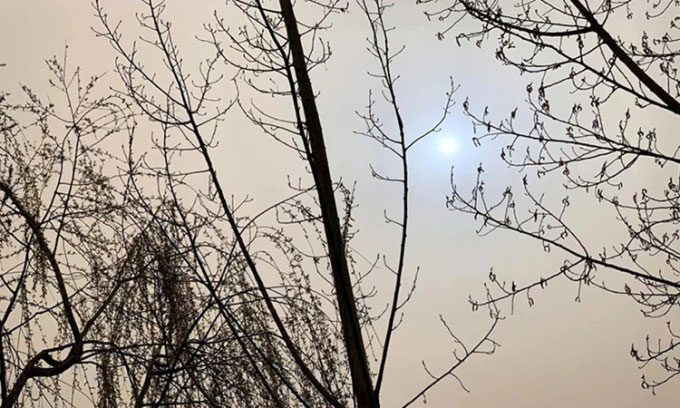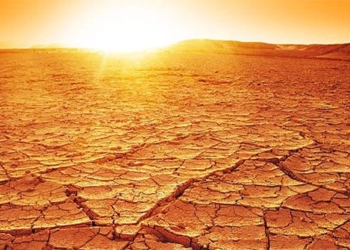The interaction between dust particles and light caused the Sun in Beijing to appear blue, similar to Mars.
A strong dust storm turned the Sun blue and increased air pollution levels in Beijing on March 22. According to the city’s air quality index, the concentration of fine particulate matter PM10 reached over 999 micrograms per cubic meter (mcg/m3) at noon. Meanwhile, the World Health Organization (WHO) recommends a maximum exposure level of 20 mcg/m3.

The interaction between dust particles and light caused the Sun to appear blue in the sky over Beijing on March 22. (Photo: Weibo)
The Institute of Public and Environmental Affairs (IPE) in Beijing reported that the dust storm likely originated from a tornado that swept through central and southern Mongolia and Inner Mongolia on March 21. According to IPE data, the PM10 concentration reached 9,355 mcg/m3 in the Xilingol region of Inner Mongolia.
“Dust storms have become more frequent in spring in recent years, especially in 2021. The dry winter and rapid warming in spring have turned barren lands into dust storm breeding grounds. Strong winds and unstable atmospheric conditions also contribute to the formation of dust storms,” said Ma Jun, founder of IPE.
Zheng Yongchun, an expert at the National Astronomical Observatory of the Chinese Academy of Sciences, explained the strange blue Sun in Beijing’s sky on March 22. “This rare phenomenon is similar to what occurs on Mars. The physical cause is light scattering,” he said.
Particles in the air can scatter and change the path of light waves but have different effects depending on the wavelength.
In a sandstorm, Mie scattering occurs. If the diameter of the particles is approximately equal to or larger than the wavelength of light, most of the light will be scattered forward. Dust particles scatter longer wavelengths like yellow and red, while the blue-violet part of the spectrum is hardly affected due to its shorter wavelength. As a result, the red in sunlight is scattered while the blue can still be observed directly, creating a spectacle of a blue Sun and a reddish sky.
A more familiar effect occurs when air particles are much smaller than light waves. In the Rayleigh scattering effect, blue light is scattered 5.5 times more than red light. When it is sunny and clear, sunlight reaches the human eye after passing through the Earth’s atmosphere, where tiny air molecules cause the Rayleigh scattering effect. Blue light disperses across the sky, while the Sun appears red.




















































